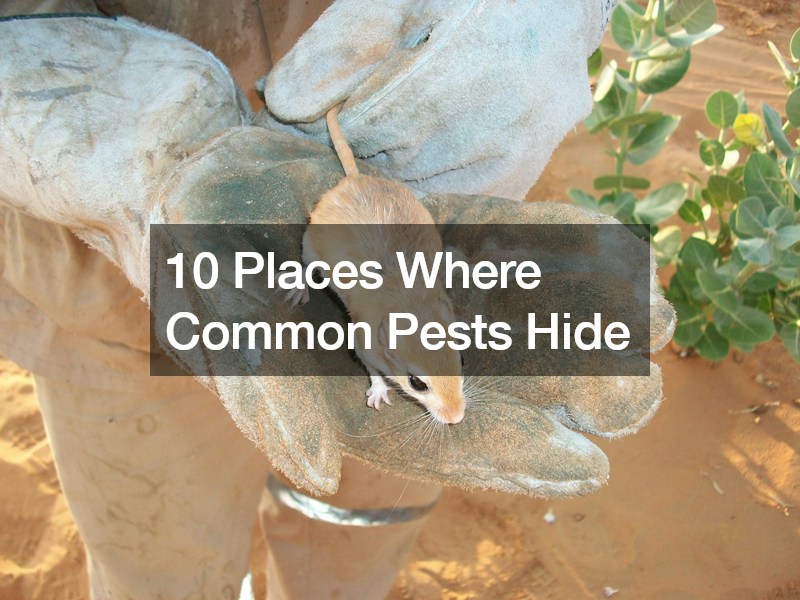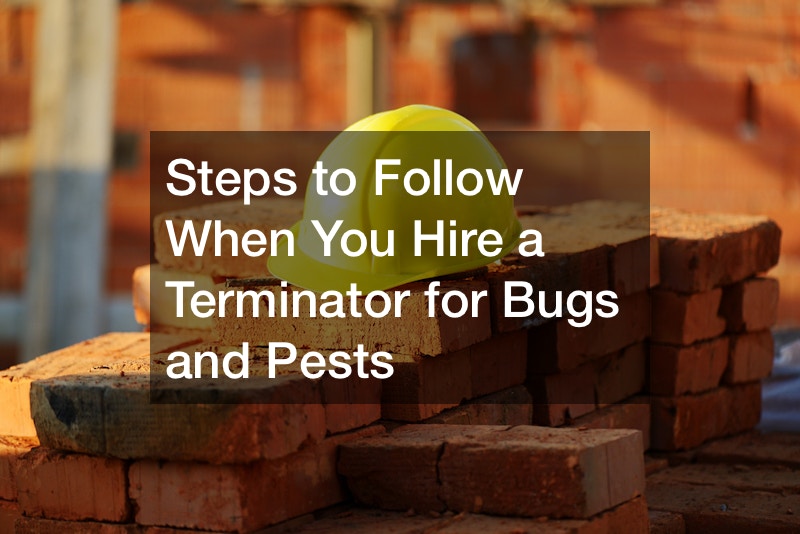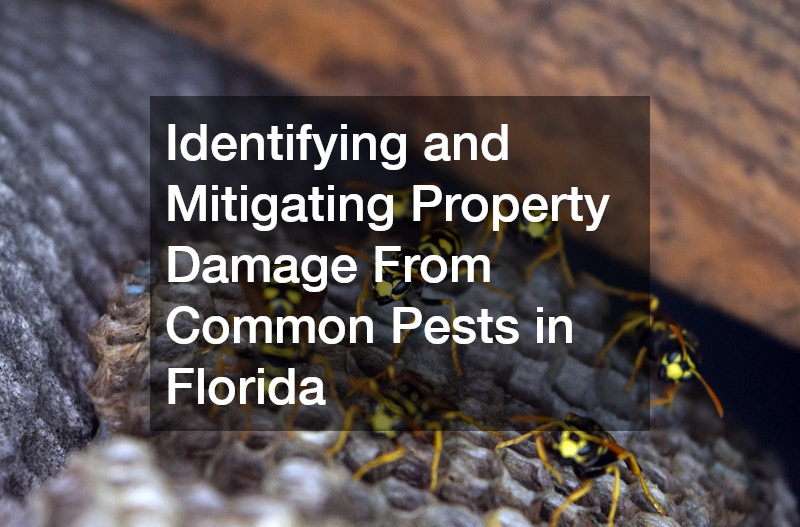You’re not alone if you’ve ever wondered where common pests hide. From the smallest corners of your kitchen to the quietest rooms in your house, these creatures are experts at finding hideouts. We’re going to unveil 10 unexpected spots these uninvited guests love. Understanding their hiding spots is key to keeping your home pest-free. Let’s dive in, shall we?
1. In and Around Concrete Cracks
You’d be surprised to discover where common pests hide, and one such unexpected hideout is in and around concrete cracks. It’s an unfortunate fact of life that these cracks aren’t only eyesores but also pest magnets. They provide a discreet pathway for pests to invade your home, offering shelter from predators and harsh weather conditions.
A professional mudjacking company can help identify and repair these cracks, but it’s equally important to understand how pests utilize them. Insects such as ants and termites often venture out of the cracks in search of food, returning to the safety of the crevices once their mission is accomplished. This behavior makes concrete cracks a focal point of any pest control strategy.
Don’t underestimate the need for regular monitoring and maintenance of these areas. If you’re dealing with persistent pests, it’s time to consider calling in the professionals. A reputable company that focuses on mudjacking doesn’t just fix your concrete — it also plays a vital role in keeping your home pest-free.
2. In Drainage Systems
Believe it or not, your home’s drainage systems are another common spot where pests hide. They’ve got just about everything a pest could want – dark, damp, and undisturbed. The network of pipes and drains often provides an easy route for these creatures to navigate through your home, keeping them hidden from your view and offering ample opportunities for reproduction.
Now, here’s where backflow testing and backflow replacement come in. A functioning backflow preventer can stop pests in their tracks by preventing them from entering your home through the drain system. This device, usually installed in your drain pipes, stops water (and pests) from flowing back into your clean water supply. Regular backflow testing ensures this device is working efficiently and can significantly reduce the chances of a pest invasion.
But what if your backflow preventer is malfunctioning or, worse, nonexistent? That’s when you should consider backflow replacement. A new, properly functioning unit will greatly improve your home’s defense against these invaders. Don’t forget that maintaining your drainage systems isn’t just about water flow — it’s also a crucial part of your pest control strategy.

3. In Dumpsters and Around Trash
Dumpsters and trash areas are like amusement parks for pests. They’re a paradise of food, shelter, and breeding grounds, making them one of the places where common pests hide most frequently. The smell of decaying organic matter attracts them, and the discarded items offer perfect nesting spaces. In fact, if you’ve got a pest problem, it’s quite possible that your garbage area could be the epicenter.
This is where dumpster services come into play. A reliable dumpster service doesn’t just dispose of your trash but also helps maintain the cleanliness of the surrounding areas. Regular cleaning and maintenance are essential to prevent the trash area from becoming a pest breeding ground. It’s not just about getting rid of the trash but also about ensuring that the area remains uninviting for pests.
You might not think much about your dumpster area, but it’s a battlefield in the war against pests. By keeping it clean and availing of a professional dumpster service, you’re taking a big step towards pest-proofing your home or business. When it comes to pest control, every small effort counts and your dumpster area is no small matter!
4. In Damp Basements
Damp basements can often become a hidden haven where common pests hide. The high levels of humidity and darkness create an environment that’s ideal for various pests to thrive. These spaces are usually neglected, making them a perfect breeding ground for pests such as termites, rodents, and even mold. It’s not just about the mess but also the potential health hazards associated with these uninvited guests.
Calling in a local sump pump company can be a game changer in these situations. A sump pump can help reduce the dampness in your basement by removing excess water, thus creating an environment that’s less inviting to pests. By maintaining a dry basement, you’re not only preventing structural damage to your property but also effectively reducing the chances of a pest infestation.
A damp basement isn’t just a structural issue — it’s a pest control issue, too. By taking proactive measures like installing a sump pump and conducting regular inspections, you’re putting up a strong defense against potential pest invasions. Never underestimate the value of a dry and clean basement in your war against pests.

5. In Untamed Gardens
Untamed gardens aren’t just an eyesore; they’re also a popular spot where common pests hide. Overgrown lawns, leaf piles, and unchecked shrubs provide pests the perfect shelter and a steady source of food. From ants and termites, who love rotting wood in your garden, to rodents, who find a suitable hideout in tall grasses, keeping your garden clutter-free is a critical part of pest control.
Iron fences play a crucial role in pest-proofing your garden. While they can’t keep all pests away, they’re effective against larger invaders such as rodents or raccoons. The sturdy structure of an iron fence makes it difficult for climbing pests to breach, adding an extra layer of protection to your garden. It’s not just about aesthetics; an iron fence can be a strong deterrent against unwanted guests.
It’s important to take care of your outdoor spaces just as much as your interiors. Regular garden maintenance, including trimming trees, bushes, and grass, will minimize the chances of pest infestations. Don’t let your garden become a safe haven for pests. A well-tamed garden is not only visually appealing but also a strategic move in your battle against pests.
6. Near Entryways
Your front doors aren’t just the gateway for you and your guests; they could also be an entry point for pests. Look closely, and you might find that it’s where common pests hide and plan their infiltration. Drafty doors, cracked thresholds, or gaps in the door frame can all offer an easy entry for small invaders. It’s essential to be vigilant and ensure that your doorways don’t unintentionally welcome pests.
Regular monitoring and maintenance of your doors can go a long way in pest control. Invest in weather-stripping to seal off any gaps that may serve as an entryway for pests. Examine your door frames and thresholds for signs of wear and tear, and consider hiring a professional if you discover any significant damage. Not only will these steps keep pests at bay, but they’ll also improve your home’s energy efficiency.
Consider the area immediately surrounding your doors. Do you have plants or trash cans placed near the door? These areas can be inviting to pests and should be cleaned regularly. Keeping the surroundings of your doors clean and clutter-free is not just visually pleasing; it’s a proactive step in managing potential pest infestations. An ounce of prevention is worth a pound of cure.

7. Inside Walls
Inside walls may appear secure, but they’re often where common pests hide. Small cracks and crevices can provide an easy pathway for pests to infiltrate your home, nesting and multiplying away from view. It’s important to pay attention to any signs of infestation, such as scratching sounds or pest droppings. If you notice these signs, it might be time to call in professionals.
Infrared scanning services can be a game-changer in these scenarios. These services use advanced technology to detect heat signatures within your walls, allowing them to identify the presence of pests without causing any structural damage. It’s a non-invasive method that can save you time and money in the long run, as it can detect an infestation before it becomes out of control.
However, it’s not enough to simply identify the problem; you should also take steps to prevent future infestations. Regular maintenance is key. Ensure any cracks or holes in your walls are promptly filled, and consider annual pest control services. Your home is your sanctuary. With careful attention to your walls, you can keep it that way.
8. Underneath Trim Boards
The area beneath the trim molding is another often overlooked spot where common pests hide. The trim boards, often beautifully designed and painted, can provide an ideal hiding place for a variety of pests. This is due to the small crevices and spaces that are created between the wall and the molding. Insects, in particular, are drawn to these areas as they provide a dark and secluded environment, often undisturbed by human activity.
It’s crucial to inspect these areas for signs of infestation regularly. Look out for droppings, shed skins, or even, occasionally, the pests themselves. A flashlight can be helpful for these inspections, allowing you to examine the crevices and spaces under the trim thoroughly. If there’s any indication of an infestation, it’s wise to take immediate action. Prolonging treatment can lead to a larger infestation, which will be more difficult and costly to control.
Prevention, as always, is better than cure. Consider sealing the gaps on your trim boards to prevent pests from finding this appealing hiding place. Regular cleaning and dusting of these areas can also deter pests from setting up shop. Your home is a place for you and your loved ones, not unwelcome pests. Taking the time to check and maintain these seemingly inconspicuous areas can contribute significantly towards a pest-free home.

9. Inside Warm Electronics
Electronic devices aren’t just a significant part of our daily lives; they’ve also become an attractive refuge for common pests. The warmth emitted by these devices, coupled with their secluded spaces, provide an inviting abode for pests, especially during colder months. Each electronic enclosure, from your computer’s CPU to an old radio, could potentially harbor uninvited guests.
When we’re dealing with electronics, we’re often oblivious to the fact that they’re places where common pests hide. It’s not uncommon to find pests nestled inside a warm TV console or within the recesses of an unused gaming console. These pests can cause serious damage to the device’s internal components, not to mention the health risks they pose to the occupants of your home.
It’s vital to maintain a routine check of your electronics and their surrounding areas. Be on the lookout for signs of pest activity, such as droppings or damage to the device. Placing electronic devices in well-ventilated areas can also help to reduce the warmth that attracts pests. A proactive approach is always your best defense against pest invasion.
10. In and Around Undisturbed Clutter
One of the most commonly overlooked areas where common pests hide is in and around undisturbed clutter. It’s easy to think of that stack of old magazines or the untouched corner of your attic as a harmless mess, but it’s all a potential pest paradise. These areas offer pests a safe haven, away from regular human activity, and offer the perfect conditions for them to thrive and multiply.
Often, we may not even realize the extent of clutter build-up until it becomes a noticeable problem. This is where roll off dumpsters come into play. They provide an efficient and effective means of decluttering your home, helping you to dispose of unwanted items that may be unwittingly providing shelter to pests. An uncluttered home is less inviting to pests, making your house safer and more hygienic.
It’s essential to incorporate regular clean-ups and decluttering into your home maintenance routine. This will not only keep your home tidy and organized but also limit the number of places where pests can hide and flourish. Prevention is better than cure, so keep your clutter to a minimum and ensure a pest-free environment in your home.
Understanding the hiding spots of pests is crucial for a pest-free home. They can exploit niches like cracks, drainage systems, dumpsters, and basements. To prevent infestations, hire professionals for repairs, backflow testing, and dumpster works. Regular maintenance, vigilant doorways, garden care, and attention to hidden areas like walls and trim boards are vital for long-term pest control. Keep electronics well-ventilated and declutter undisturbed spaces for a safer living environment.



